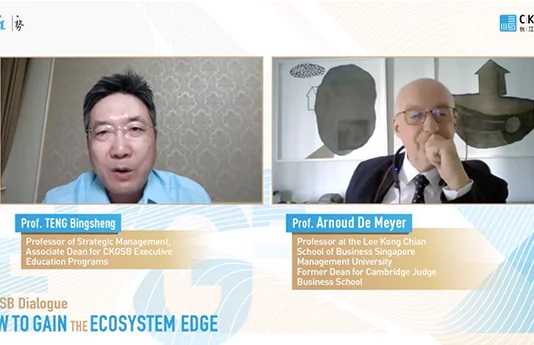The dynamics that govern the decisions that a firm has to think through while deciding on market entry.
The opening of the 1960s television show Star Trek which followed the voyages of the Starship Enterprise explained that its crew’s mission was “to boldly go where no man has gone before.” For firms the mission can be quite different as they often have to go where others have already gone. Unless a firm is the first to enter a market, it will face one or more incumbents upon entry. In such cases, how should a firm decide whether and where to enter?
To answer this question let’s think about a firm deciding whether to enter into many separate markets in which an incumbent already competes. How should the firm proceed? We would expect the firm to enter the most attractive market first. This allows the firm to begin earning the largest profits soonest. We would expect it to then move to the second most attractive market for the same reason and then the third and so on. Will the firm eventually enter into all of the incumbent’s markets? Not necessarily. At some point the firm may reach a market that is not attractive enough to support two firms. If so, it will not enter that market or any less attractive ones.
What makes a market too unattractive to enter? Each firm brings its own fixed costs of operating to a market. If these costs are relatively large, a market might be attractive enough to profitably support one firm but not two. There may not be enough customers willing to pay enough to cover both firms’ costs and still allow each to make a reasonable return on their investment. Exacerbating this, the presence of two firms likely leads to lower prices than one firm due to competition (a phenomenon I documented earlier). If a market is too unattractive to support a second firm, it remains a monopoly.
Do firms actually behave this way? As a test, I took a look at China’s fast-growing taxi apps market in which Didi Kuaidi and Uber are the main competitors. Didi Kuaidi’s forerunners (Didi Dache and Kuaidi Dache recently merged) began operating in mainland China before Uber and the combined firm claims to now operate in all mainland Chinese cities.[1] This is true in some literal sense because their app is available on any smartphone operating anywhere in mainland China. From a practical standpoint this is not the case because most small cities have such thin markets (both on the passenger and driver side) that they effectively do not operate there. Nonetheless, Didi Kuaidi operates in more markets than Uber and established itself earlier so we can think of them as the incumbent firm. Uber is the later entrant so we can look at where it has decided to enter and not.
Uber currently operates in 18 mainland China cities.[2] How did Uber choose these markets? I don’t know for sure but if my reasoning above is correct, they chose them because they are the most attractive. Consistent with this, 15 of the 18 are in the top 20 cities in mainland China in terms of total gross domestic product (GDP).[3] Two of the other cities, Yantai and Jinan, are close behind at 21 and 23. A city’s GDP roughly measures its total income. Cities with a large GDP are attractive in that they have a lot of people, a lot of income per person, or both. These attributes likely translate into greater demand for for-hire passenger transport.
Uber seems to be proceeding in the way we would expect—working its way down the list of most attractive markets. Of course, this is an ongoing process so as it expands Uber will enter successively less attractive markets. If I am right we should see it continue to work its way down the list of cities with the highest GDP until it reaches a market that is not attractive enough to support both it and Didi Kuaidi. After all, unlike the universe that the Starship Enterprise explored, Uber’s voyages of exploration are finite.
I recently analyzed the merger of China’s two largest rail manufacturers to determine whether it increased market power or efficiency and the results were inconclusive. A similar merger of two Chinese shipping companies may occur. An August 10 announcement said the central government had asked China Ocean Shipping Co. (COSCO) and China Shipping Co. to prepare a merger plan. I performed an analysis similar to the one I did for the railway manufacturers to see what effect, if any, this had on the stock performance of competitors. There are two other major domestic shipping companies but only one, China Merchants Energy Shipping Co. (CMES), did not have its trading halted after the potential merger announcement (COSCO and China Shipping Co. themselves were also halted). There is also one publicly-traded foreign competitor APM-Maersk. On August 10 CMES’ stock price increased 10.0% while the Shanghai SES stock index increased only 4.9% providing some evidence that market power increased. APM-Maersk did not perform significantly differently from the Copenhagen stock exchange on which it is traded (-0.5% versus 0.5% for the KAX index).[4] This could mean the merger is not significant enough to affect APM-Maersk which operates worldwide or that the merger did not increase market power. Overall, the evidence is suggestive enough that the merger should be investigated for anti-competitive effects.
[1] Based on a phone call by my research assistant to the firm on November 17, 2015.
[2] The cities are Beijing, Changsha, Chengdu, Chongqing, Dalian, Foshan, Guangzhou, Hangzhou, Jinan, Ningbo, Qingdao, Shanghai, Shenzhen, Suzhou, Tianjin, Wuhan, Xi’An, and Yantai. Based on https://www.uber.com.cn/cities accessed on November 17, 2015.
[3] The rankings of the 18 cities are: 1) Shanghai, 2) Beijing, 3) Guangzhou, 4) Shenzhen, 5) Tianjin, 6) Suzhou, 7) Chongqing, 8) Chengdu, 9) Wuhan, 10) Hangzhou, 13) Qingdao, 14) Dalian, 16) Changsha, 17) Ningbo, 18) Foshan, 21) Yantai, 23) Jinan, and 28) Xi’an. The top 20 cities that Uber has not entered are: 11) Wuxi, 12) Nanjing, 15) Shenyang, 19) Zhengzhou, and 20) Tangshan. Based on 2014 data from China City Statistical Yearbook.
[4] The more rigorous and formal even study methodology that I describe in my earlier article reveals the same patterns for CMES and APM-Maersk.




















